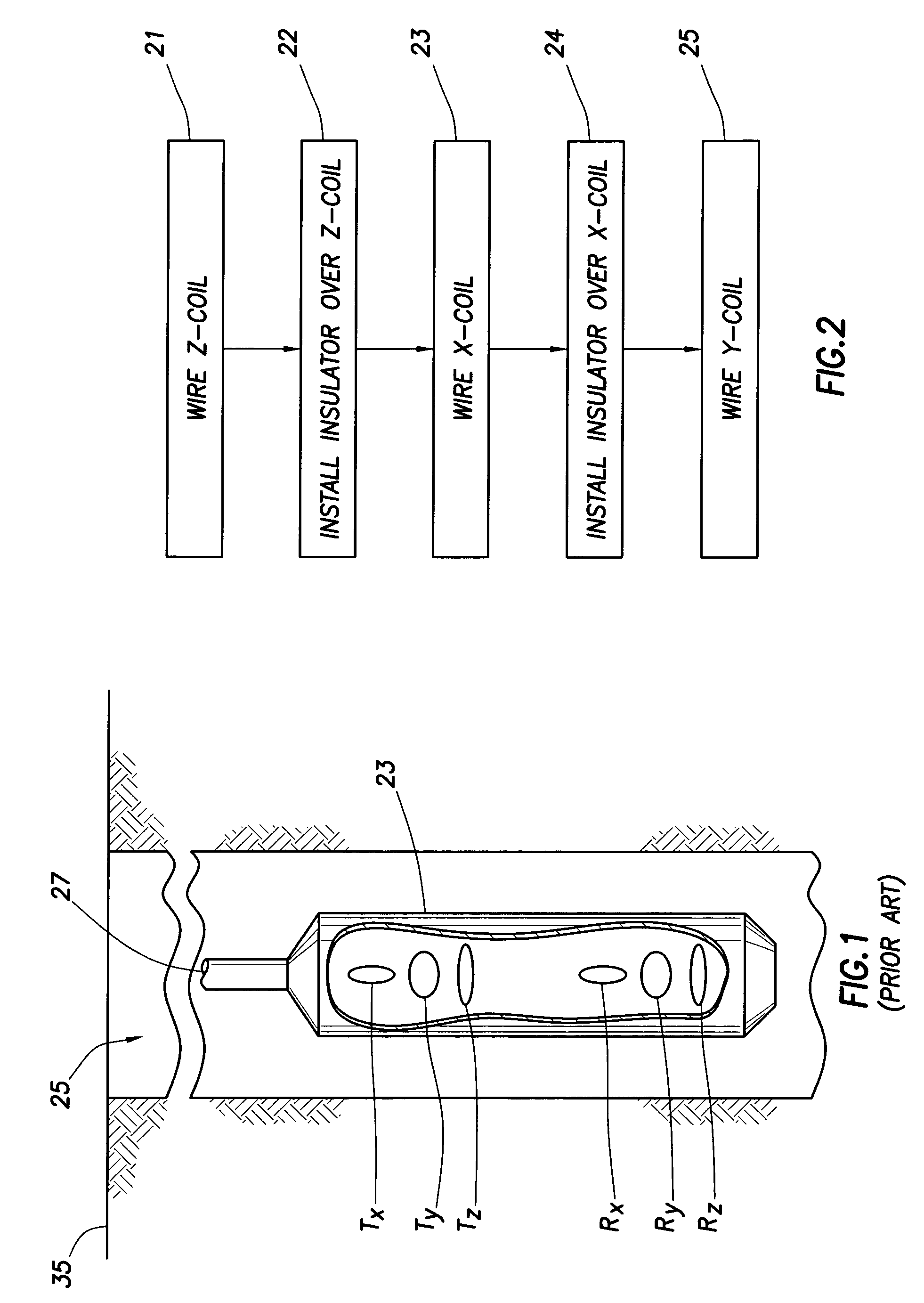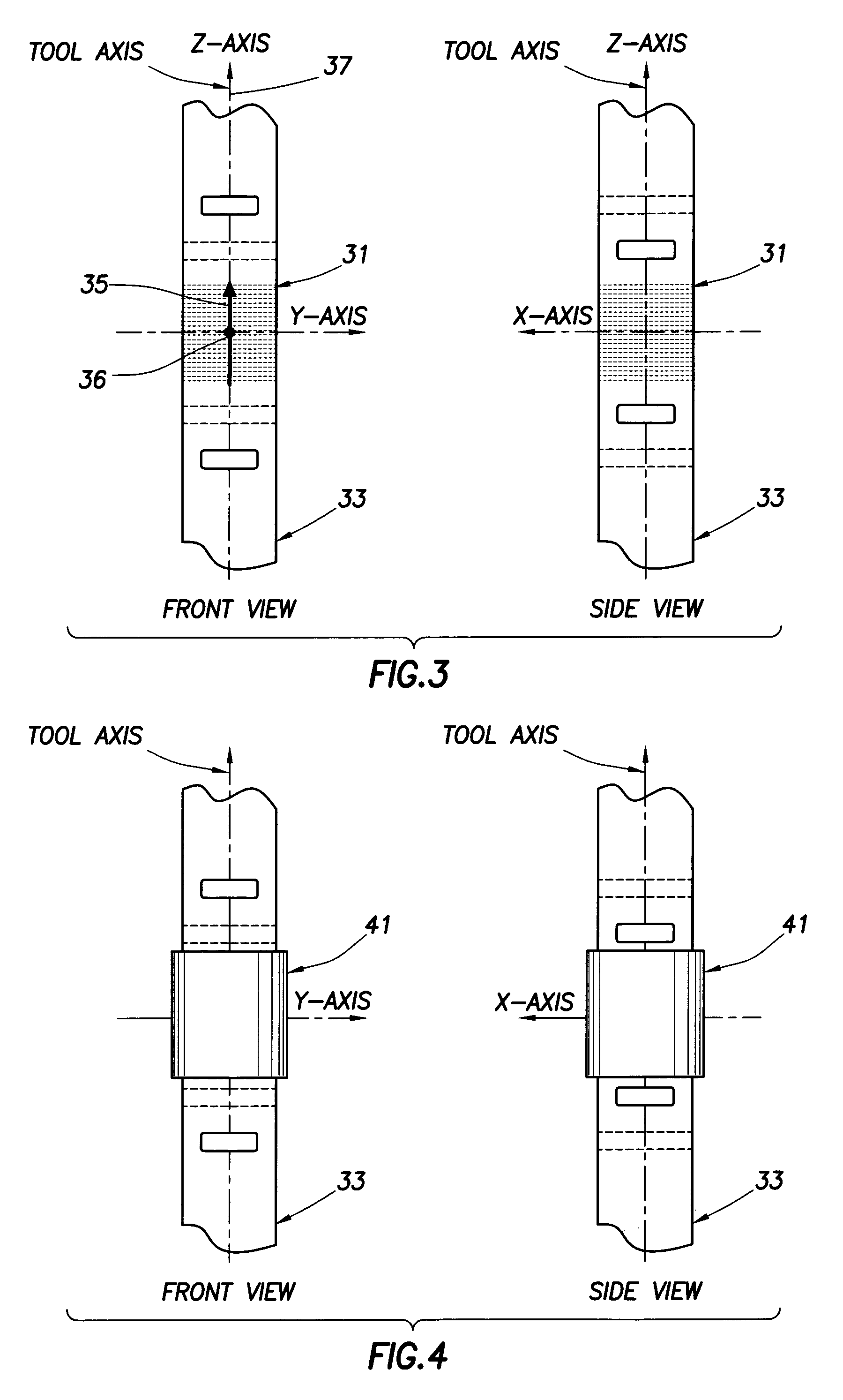Constructing co-located antennas by winding a wire through an opening in the support
a technology of co-location and support, which is applied in the direction of polarised antenna unit combination, subaqueous/subterranean adaption, instruments, etc., can solve the problems of inability to detect conventional em logging instruments, requiring a considerable amount of space within the logging instrument, and inherently including measurement errors in conventional resistivity measurement data
- Summary
- Abstract
- Description
- Claims
- Application Information
AI Technical Summary
Problems solved by technology
Method used
Image
Examples
Embodiment Construction
[0029]Embodiments of the invention relate to methods for assembling antennas on logging instruments adapted for subsurface measurements. Some embodiments of the invention relate to EM logging tools having antenna assemblies comprising multiple coils with co-located magnetic dipoles. Embodiments of the invention have general applications in the oilfield and subsurface exploration industry, but their applications are not limited to any particular discipline or industry.
[0030]EM logging tools are well known in the art. FIG. 1 shows a prior art tri-axial EM logging tool (23) lowered into a well (25) by a wireline (27). The EM logging tool (23) includes tri-axial transmitter antennas (Tx, Ty, and Tz) disposed at different locations along the longitudinal axis of the EM logging-tool (23). The tri-axial transmitter antennas (Tx, Ty, and Tz) have their magnetic dipoles oriented in orthogonal directions relative to each other. The EM logging tool (23) also includes tri-axial receiver antenna...
PUM
 Login to View More
Login to View More Abstract
Description
Claims
Application Information
 Login to View More
Login to View More - R&D
- Intellectual Property
- Life Sciences
- Materials
- Tech Scout
- Unparalleled Data Quality
- Higher Quality Content
- 60% Fewer Hallucinations
Browse by: Latest US Patents, China's latest patents, Technical Efficacy Thesaurus, Application Domain, Technology Topic, Popular Technical Reports.
© 2025 PatSnap. All rights reserved.Legal|Privacy policy|Modern Slavery Act Transparency Statement|Sitemap|About US| Contact US: help@patsnap.com



